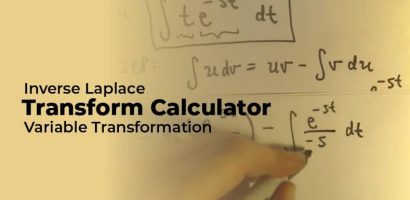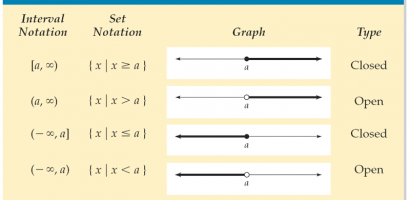Completing the square calculator: The square method is frequently used to factor a quadratic equation and then find its roots and zeros. Specifically, quadratic equations of the form
ax^2+bx+c=0
Factorization can be used to solve the problem. However, there are times when factoring the quadratic expression is necessary.
ax^2+bx+c
is either complicated or not possible. Take a look at the following example to see what I mean.
As an example:
x^2+2x+3
This cannot be factored in because we cannot find two numbers whose sum is 2 and whose product is 3. It is written in the following manner instead.
a(x+m)^2+n by completing the square.
Because we have
(x+m)
When we have squared the entire area, we say we have “completed the square.” But how do we finish the square? We will learn more about the concept.
So, completing the square calculator is a very useful tool to solve such sums.
Completing the square calculator with steps
The formula for using the completing the square calculator is as follows:
In the first step, type the expression into the input field.
So, completing the square calculator is a very useful tool to solve such sums.
After the first step, to obtain the outcome, click “Solve by Completing the Square.”
Finally, in the last step, the variable value for the given expression will be displayed in the new window.
To find the roots of a quadratic equation, we can use one of four methods. Completing the squares of the quadratic equation, factorising the quadratic equation, applying the quadratic formula, and graphing the quadratic equation are some examples. The steps to solving a quadratic equation’s square are as follows:
- Assume we have a quadratic equation, ax^2 + bx + c = 0.
- We must make certain that the coefficient of x is always 1. As a result, we divide the entire quadratic equation by the x coefficient; x^2 + bx/a -c/a = 0.
- We get x^2 + bx/a = -c/a by keeping the variable terms on one side and the constants on the other.
- On both sides, we add the term (b/2a)2; x^2 + bx/a + (b/2a)^2 = -c/a + (b/2a)^2
- This allows us to express the L.H.S. as a perfect square: (x + b/2a)2 = -c/a + (b/2a)^2.
- a(x + b/2a)^2 + (c – b^2/4a) = 0 is the vertex form. (you have to multiply the whole equation by a.)
- This equation can now be solved to find the roots.
By completing the square, ax^2 + bx + c can be expressed as a(x + d)^2 + e.
In this case, d = b / 2a and e = c – (b^2/4a).

Completing the square calculator in the form a(x+b)^2+c
To complete the square, we have to write a quadratic expression of the form ax^2 + bx + c to the form a (x + h)^2 + k
Firstly, let us take a common.
So, the expression becomes a (x^2 + b/a x + c)
Then, let us add and subtract the term (b/2a)^2
Hence, the expression becomes a ( x^2 + b/a x + (b/2a)^2 – (b/2a)^2) + c
Which is equal to a ( x^2 + b/a x + (b/2a)^2) – (b/2a)^2) + c
Thus, we can group the terms inside the brackets into a square.
So, this becomes, a ( x + (b/a)^2 – (b/2a)^2) + c
The above equation may be written as
a (x + h)^2 + k
So, here, h = b/2a and k = c – (b/2a)^2

Hyperbola completing the square calculator
To complete the square for hyperbolas:
- Arrange the equation so that all variable terms are on the same side and the constant is on the opposite side.
- Arrange the terms in such a way that the y terms are next to each other and the x terms are next to each other.
- Subtract the coefficients of the x^2 and y^2 terms.
- Now, note the number in front of the first degree term for each set (x and y separately), divide it by two, and square it.
- Add the values of both numbers to both sides of the equation. (Be careful: you must add the total distributed value of the number.)
- Factor and rewrite both trinomials.
So, completing the square calculator is a very handy tool to solve such sums.

Completing the square calculator with two variables
Let us look at an example.
9x^2-18x+16y^2+96y+9=0
For x
To begin, we must arrange the equation so that all of the variables are on one side and the constant is on the other. That means we have to move the 9 to the opposite side.
-9 = 9x^2-18x+16y^2+96y
Because the x and y terms are already grouped together, we must now factor out the coefficients of the x^2 and y^2 terms. The x’s and y’s will be factored separately:
9(x^2-2x)+16(y^2+6y) =-9
We now take the number from the first degree term, divide it by two, and square it. For x, -2 divided by 2 equals -1, and squared equals 1. 6 divided by 2 equals 3, squared equals 9.
Each of these values must be added to both sides of the equation. When we add the 1 in parenthesis to x, we are actually adding 9 (because 9 is distributed to the 1). As a result, we must add 9 to the right side:
9(x^2-2x+1)+16(y^2+6y)=-9+9
For y
In parenthesis, we must add 9 to y. This is a significant increase of 144. (because 16 is distributed to 9.) As a result, we’ll add 144 to the right side.
9(x^2-2x+1)+16(y^2+6y+9)=-9+9+14.
We will now factor each term in the equation.
9(x-1)(x-1)+16(y+3)(y+3)=144
Next, we will write them again as:
9(x-1)^2+16(y+3)^2=144
We will divide each term by 144 since we want the right hand side of the equation to be unity or 1.
So, 9(x-1)^2/144 +16(y+3)^2/144 =144/144
Also, to simplify:
(x-1)^2/16 +(y+3)^2/9 =1
It is now in a format from which we can clean our data.
Completing the square calculator with fractions
So, now, we will do this with the help of an example.
x^2 – 1/4x + 1/128 = 0
Thus, we will subtract the constant 5/2 from both sides of the given equation. Therefore, we will be left with x^2 – 1/4x = -1/128
Here, (b/2)^2 = (-1/4/4)^2= 1/64
So, x^2 – 1/4x + 1/64 = -1/128 + 1/64
So (x – 1/8)^2 = 2/128 = 1/64
Again, (x – 1/8) * (x + 1/8) = 1/64
To solve for x, we will separate the terms to get,
x = 1/64 + 1/8 = 9/64
And, x = 1/64 – 1/8 = -7/64
Solve the equation by completing the square
Example 1:
Solve this given equation by completing the square method.
x^2 – 5x + 4 = 0
Solution:
So, write this equation as x^2 – 5x = -4
Add (-5/2)^2 on both sides of the equation.
Hence, we get, x^2 – 5x + 25/4 = -4 + 25/4
Thus, we get x^2 – 5x + 25/4 = 9/4
So, now, we take square of the left hand side (LHS)
(x – 5/2)^2 = 9/4
If we take square root on both the sides of the equation, we get,
x – 5/2 = + – 3/2
So, to solve for x, we have to separate the terms.
Hence, x = 3/2 + 5/2
Which gives us, x = 4
And, x = -3/2 + 5/2
Which is equal to x = 1
Answer: the values of x are 1 and 4.
Example 2:
Solve this given equation by completing the square method.
x^2 +4x + 1 = 0
Solution:
So, write this equation as x^2 + 4x = -1
Add (4/2)^2 on both sides of the equation.
Hence, we get, x^2 – 5x + 16/4 = -4 + 16/4
Thus, we get x^2 – 5x + 16/4 = 0
So, now, we take square of the left hand side (LHS)
(x – 4/2)^2 = 0
Further simplifying the equation we get,
(x – 4/2) * (x – 4/2)= 0
So, to solve for x, we have to separate the terms.
Hence, x = 4/2
Which gives us, x = 2
And, x = -4/2
Which is equal to x = -2
Answer: the values of x are 2 and -2.
Example 3:
Solve this equation by completing the square calculator.
x^2 +5x – 3 = 0
Solution:
Add 3 to either side of the equation so that the left-hand side contains only terms with x. So, it gives us:
So, it becomes, x^2 + 6x – (3) + (3) = 3
Therefore, the equation simplifies to x^2 + 5x = 3
So, now it’s time to complete the square! To do this, we have to take a part of the coefficient in front of x and then square it:
Thus, the coefficient in front of x is 5 and one half of 6 is 5/2.
So, after squaring, we get (5/2)^2 = 25/4
Add the number computed in the second step to both sides of the equation:
x^2 + 5x + 25/4 = 3 + 25/4
So, it becomes, x^2 + 5x + 25/4 = 37/4
Recall the short multiplication formula, (a + b)^2 = a^2 + 2ab + b^2, and note that we may apply it ‘backwards’ to the left-hand side of our equation (with a = x and c = 5/2). Thus, we obtain:
(x + 5/2)^2 = 37/4
Now, we will apply the square root of both sides:
x + 5/2 = 37/4 or x + 5/2 = – 37/4
So, thus gives us:
x = 27/4 and x = – 47/4
Answer: the values of x are x = 27/4 and x = -47/4
Example 4:
Solve the equation x^2−4x+5y^2+10y+14 by completing the square method.
Solution:
x^2−4x+5y^2+10y+14 .
So, now add and subtract 5:
This gives us, x^2−4x+5y^2+10y+14
Which is equal to x^2−4x+5y^2+10y+14+(5)−(5)
Then, x^2−4x+9+(5y^2+10y+5)=x^2−4x+9+(5(y^2+2y+1))
Therefore, now complete the square:
This gives us: x^2−4x+9+5(y^2+2y+1)=x^2−4x+9+5(y+1)^2
Again, add and subtract 4:
x^2−4x+5(y+1)^2+9
Which is equal to x^2−4x+5(y+1)^2+9+(4)−(4)
Now, complete the square:
5(y+1)^2+5+(x^2−4x+4)=5(y+1)^2+5+(x−2)^2
Answer: x^2−4x+5y^2+10y+14=(x−2)^2+5(y+1)^2+5.
Completing the square method class 10
A method for rewriting a quadratic expression of the form ax^2 + bx + c to the vertex form a(x – p)^2 + k is known as completing the square. Completing the square is most commonly used to solve a quadratic equation. This is accomplished by rearranging the expression obtained after completing the square: a(x + m)^2 + n. Thus, we will see that the left hand side of the equation is a perfect square trinomial. Completing the square method comes in handy in the following situations:
- The first one is converting a quadratic expression to a vertex form.
- determining the minimum/maximum value of the quadratic expression
- A quadratic function is being graphed.
- Attempting to solve a quadratic equation.
- The quadratic formula is derived.
- Factorizing a quadratic equation, and thus finding the roots and zeros of a quadratic polynomial or a quadratic equation, is the most common application of the completing the square method.
We know that the factorization method can solve a quadratic equation of the form ax^2 + bx + c = 0. However, factoring the quadratic expression ax2 + bx + c can be difficult or impossible at times.
Completing the square formula
A technique or procedure for converting a quadratic expressionl or equation into a perfect square with an additional constant is known as completing the square formula. By using the completing the square formula or technique, a quadratic expression in any variable (say, x): ax^2 + bx + c, where a, b, and c are any real numbers on the number line. Also, here a is not equal to 0. Additionally, the equation can be converted into a perfect square with some additional constant.
It is worth noting that the quadratic formula is derived by the formula of completing the square.
Completing the square formula is a procedure or method for finding the roots of given quadratic equations, ax^2 + bx + c = 0, where a, b, and c are any real numbers where a is not equal to 0.
Formula
ax^2 + bx + c
= a(x + m)^2 + n is the formula for completing the square.
where m can be any real number and n is a constant.
Instead of using a complex step-by-step method to complete the square, we can use the following simple formula. Find the following to complete the square in the expression ax^2 + bx + c:
n = c – (b^2/4a) and m = b/2a
Substitute these values into the equation: ax^2 + bx + c = a(x + m)^2 + n. Geometrically, these formulas are derived. In the following sections, we’ll go over this in greater detail with illustrations.
Completing the square calculator FAQs
1. What exactly is the Completing the Square Method?
In mathematics, completing the square is a method for changing a quadratic equation of the form ax^2 + bx + c to the vertex form a(x + m)^2 + n. The most common usage of this method is when we try to solve a quadratic equation by rearranging the expression we obtain after completing the square: a(x + m)^2 + n. So that the left hand side of the equation is a perfect square trinomial.
2. What is the Easiest Way to Learn Square Completion?
The very common completing the square formula, ax^2 + bx +c = a(x + m)^2 + n, is the simplest way to learn the method. m and n can be calculated using the following formulas: m = b/2a and n = c -b^2/4a.
3. What Good Is Completing the Square?
Completing the square formula serves the following functions:
- It can be used in converting a quadratic expression to a vertex form.
- Determining the minimum/maximum value of the quadratic expression
- We can graph a quadratic function.
- Attempting to solve a quadratic equation.
4. What should you include When completing the square?
If we have the equation ax^2 + bx, we must add and subtract (b/2a)^2 to complete the square in the expression. This yields [x + (b/a)]^2 – (b/2a)^2.
5. With two variables, how do you complete the square?
Let us now look at how to complete the square in the equation of two variables. We do this to better comprehend the process of completing the square with two variables. Consider the expression x^2 + y^2 + 2x + 4y + 7 in two variables. To finish the square, we divide each of the x and y coefficients in half and then square it. The x coefficient is 2, and the y coefficient is 4. This means that (1/2 * 2)2 = 1 and (1/2 * 4)2 = 4.
Let’s add and subtract this from the equation. Then, rearrange the terms to fill in the blanks.
x^2 + y^2 + 2x + 4y + 7 + (1 – 1) + (4 – 4) = (x^2 + 2x + 1) + (y^2 + 4y + 4) + 7 – 1 – 4 = (x + 1)^2 + (y + 2)^2 + 2
6. When should you use Completing the Square?
When you want to change a quadratic equation of the form ax^2 + bx + c to the vertex form a(x – h)^2 + k, you can use the completing the square method.
7. What exactly is the Completing the Square Formula?
Completing the square formula is the formula used to convert a quadratic polynomial or equation into a perfect square with the addition of some constant. It is written as,
ax^2 + bx + c = a(x + m)^2 + n, where m and n are positive integers.
8. What Good Is Completing the Square Formula?
We use completing the square formula when we want to factorise a quadratic polynomial or equation by transforming it into a perfect square with some additional constant.
9. What if the equation has a not equal to 1?
Simply apply one of the most common problem-solving techniques in mathematics, namely, transform the problem into the one you have already solved. So, simply divide your equation by a.
Some More Frequently Asked Questions
-
What is a completing the square calculator?
A completing the square calculator is a tool that helps solve quadratic equations by transforming them into a perfect square trinomial. This method simplifies the equation, making it easier to find the solutions.
-
How does MathPapa’s completing the square calculator work?
MathPapa’s completing the square calculator is an online tool that allows users to input a quadratic equation and receive a step-by-step solution using the completing the square method, simplifying the equation and finding its solutions.
-
How do you calculate a(x+b)^2+c form using a completing the square calculator?
A completing the square calculator can transform a quadratic equation into the form a(x+b)^2+c by factoring the equation and identifying the perfect square trinomial. The calculator will provide a step-by-step guide, resulting in the desired form.
-
What does Mathway’s completing the square calculator offer?
Mathway’s completing the square calculator is an online tool that helps users solve quadratic equations using the completing the square method. It provides step-by-step solutions and allows users to check their work or learn the process.
-
How do you find vertex form using a completing the square calculator?
A completing the square calculator can transform a quadratic equation into vertex form by rearranging the equation into the format y=a(x-h)^2+k. The calculator will provide step-by-step instructions, making it easy to identify the vertex.
-
What is Symbolab’s completing the square calculator?
Symbolab’s completing the square calculator is an online tool that helps users solve quadratic equations using the completing the square method. It provides a step-by-step solution, simplifying the equation and identifying the solutions.
-
How do you create a completing the square calculator program?
A completing the square calculator program can be created using a programming language like Python, JavaScript, or C++. The program should take a quadratic equation as input, apply the completing the square method, and output the simplified equation and its solutions.
-
Can a completing the square calculator handle a missing term?
Yes, a completing the square calculator can handle a missing term in a quadratic equation. The calculator will simplify the equation and find the solutions, considering the missing term as zero.
-
Can a completing the square calculator handle two variables?
A completing the square calculator is designed for quadratic equations with one variable. However, some advanced tools may be able to handle equations with two variables, depending on the complexity of the equation.
-
Can a completing the square calculator work with fractions?
Yes, a completing the square calculator can work with fractions in a quadratic equation. The calculator will simplify the equation and provide step-by-step solutions, taking the fractions into account.
-
How do you solve a quadratic equation using a completing the square calculator?
To solve a quadratic equation using a completing the square calculator, input the equation into the calculator, and the tool will apply the completing the square method, providing a step-by-step solution to find the roots of the equation.
-
Can a completing the square calculator factorise equations?
A completing the square calculator primarily simplifies quadratic equations, but some calculators may also offer factorization features to help solve the equation.
-
Can a completing the square calculator handle integration?
A completing the square calculator typically focuses on solving quadratic equations. For integration, a separate integration calculator or a more advanced mathematical tool would be more appropriate.
-
How do you complete the square using a calculator?
To complete the square using a calculator, input the quadratic equation into a completing the square calculator, and the tool will provide step-by-step instructions, transforming the equation into a perfect square trinomial and identifying the solutions.




